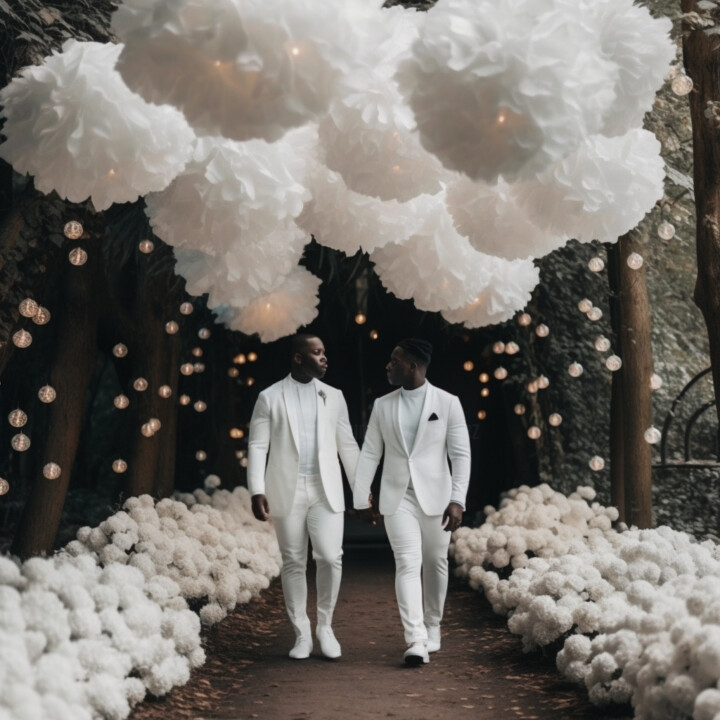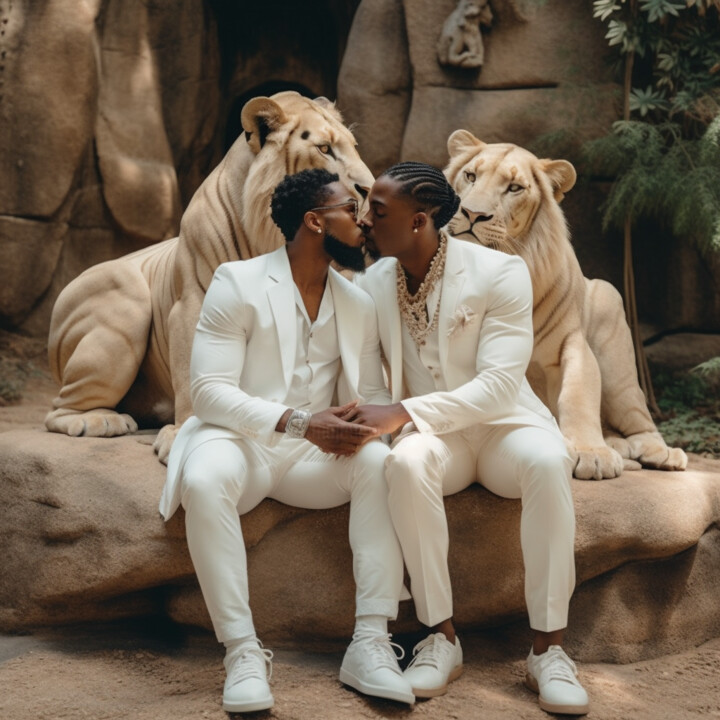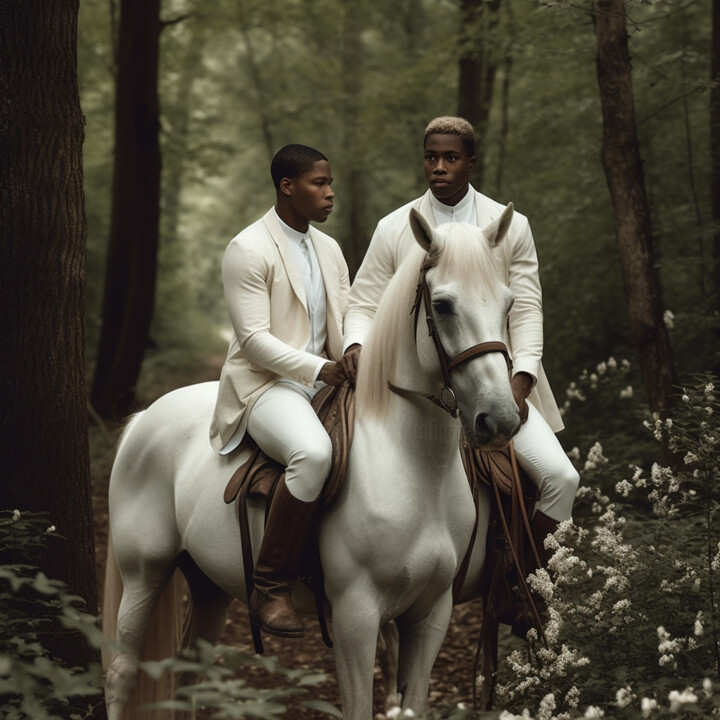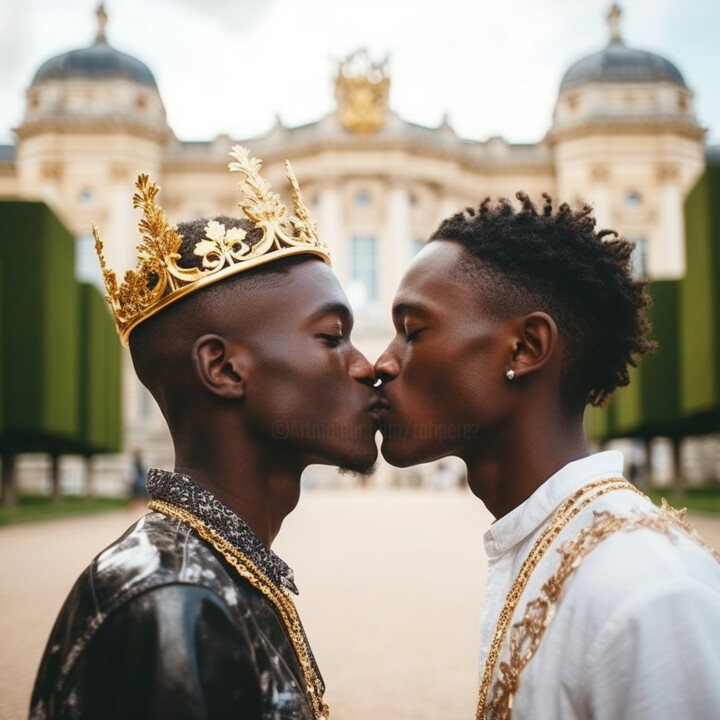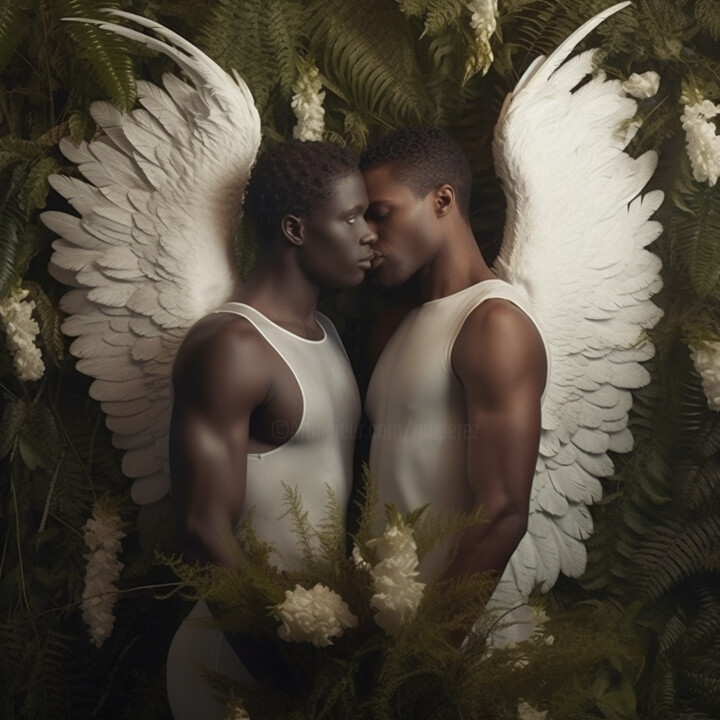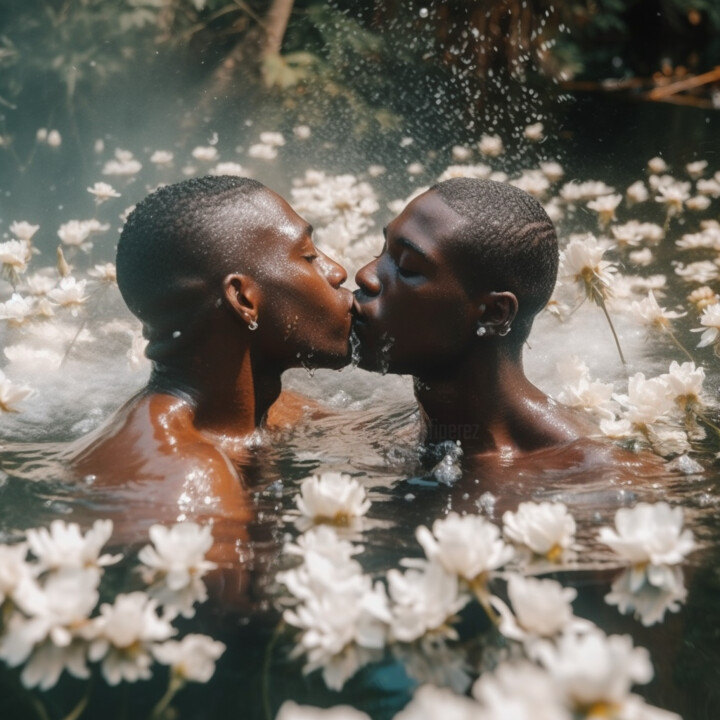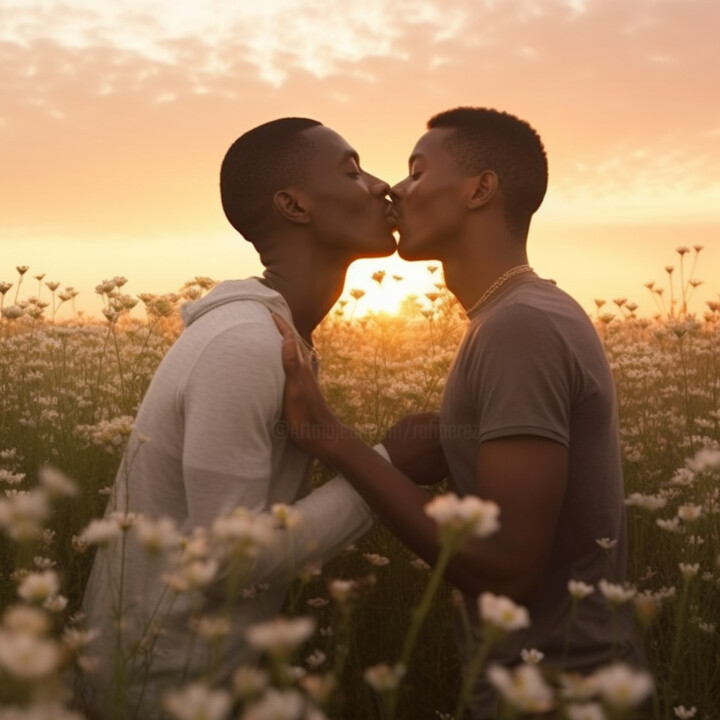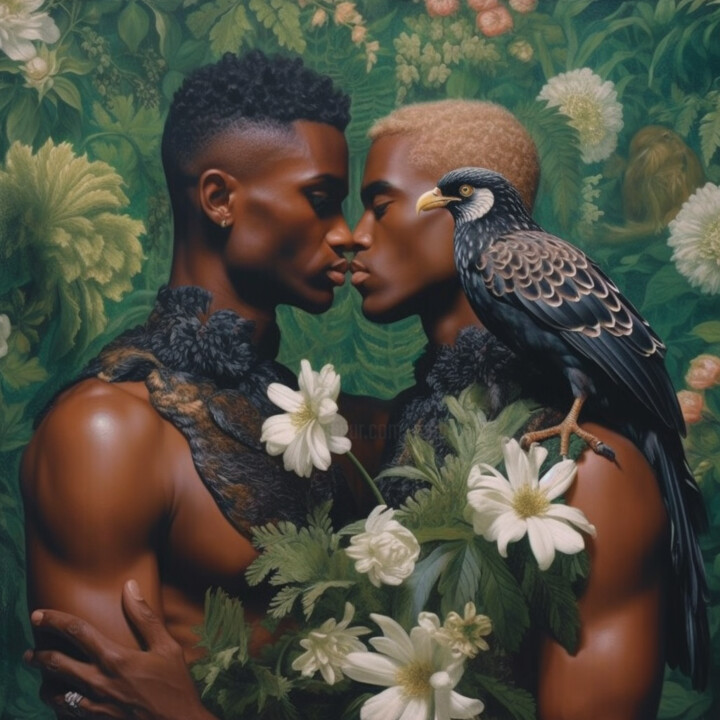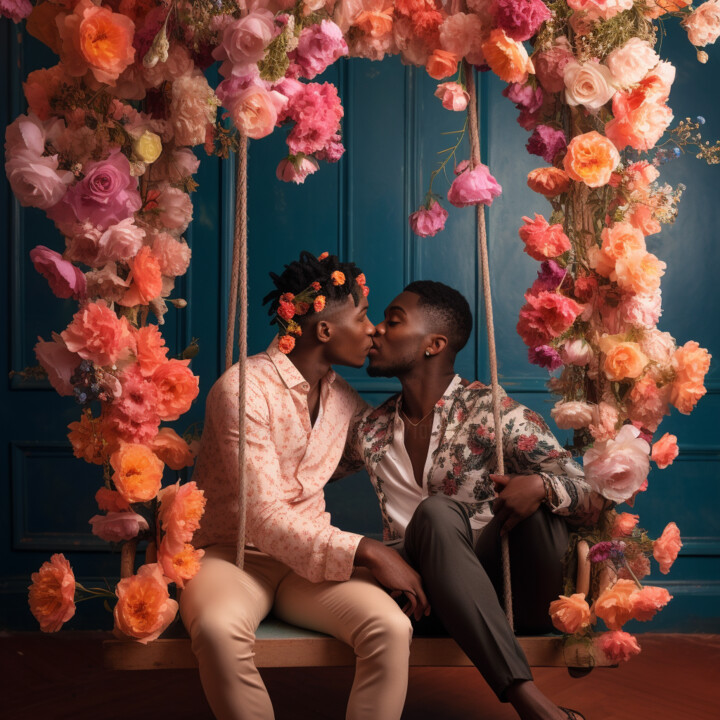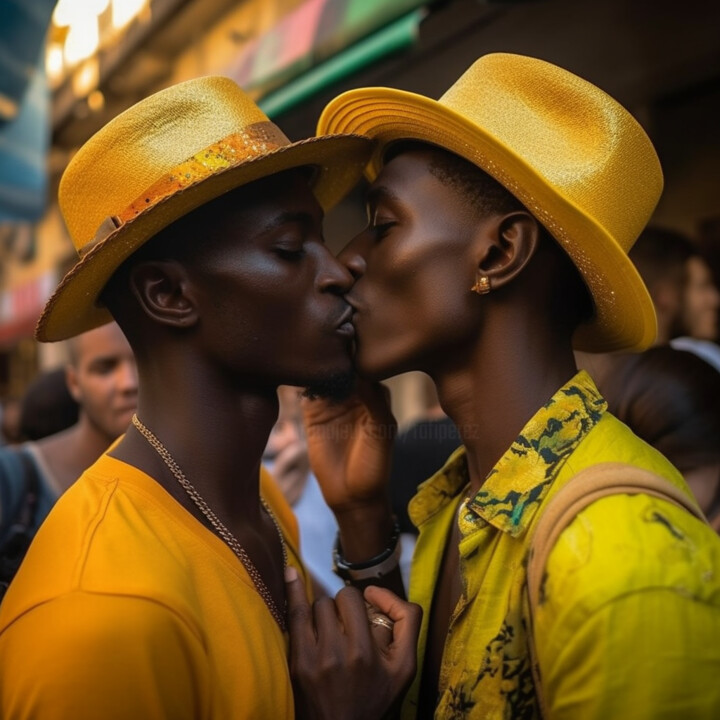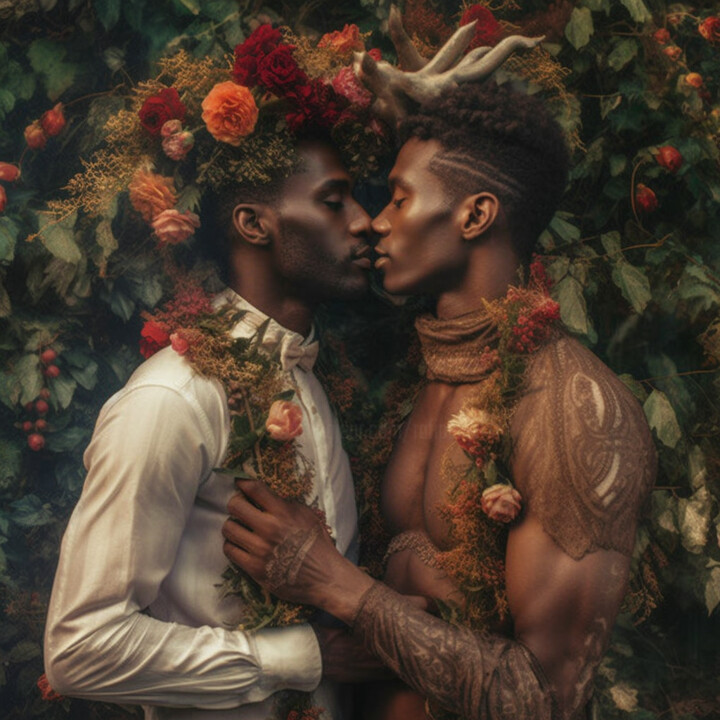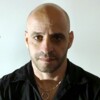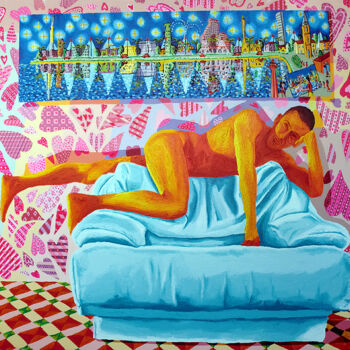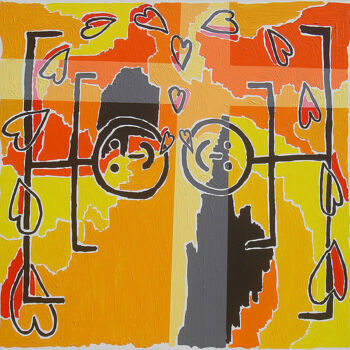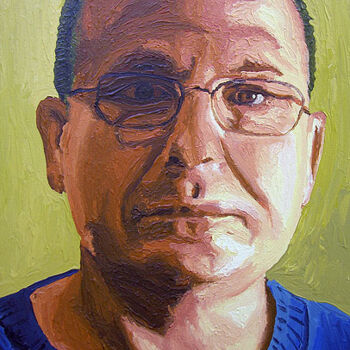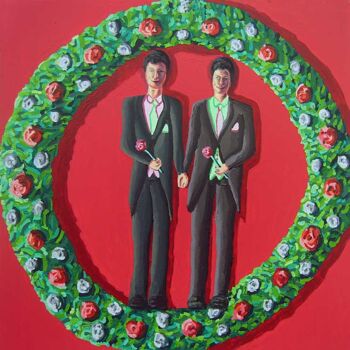black gay men marriage AI photos wedding ceremony photo man (2023) デジタルアーツ Raphael Perez によって
この画像はライセンス付きでダウンロードできます
Raphael Perez が販売
-
この作品は「オープンエディション」です
デジタルアーツ,
ジークレープリント / デジタルプリント
- 寸法 利用可能ないくつかのサイズ
- 利用可能ないくつかのサポート (ファインアート紙, 金属への印刷, キャンバスプリント)
- フレーミング 利用可能なフレーミング (フローティングフレーム+アンダーグラス, フレーム+アクリルガラスの下)
- アートワークの状態 仕事はとても良い状態です
- AI生成画像 アーティストは人工知能技術を使用してこの画像を作成しました
- カテゴリ 象徴主義
Nunta a doi bărbați homosexuali de culoare într-o țară occidentală este un exemplu de căsătorie între persoane de același sex, care este recunoașterea legală a unirii a două persoane de același sex legal. Multe țări occidentale au promulgat legi care permit această practică, cum ar fi Canada, Franța, Germania, Spania, Regatul Unit și Statele Unite. Cu toate acestea, această practică s-a confruntat și cu opoziție și provocări din partea unor grupuri religioase, politicieni conservatori și mișcări sociale. Istoria homosexualității în societatea occidentală a fost caracterizată de perioade de criminalizare și stigmatizare. Unii savanți au sugerat că Biserica Romano-Catolică a recunoscut uniunile între persoane de același sex în Europa medievală, dar această sugestie a fost contestată de alții. Există, de asemenea, dovezi istorice ale relațiilor lgbt și ale expresiilor de dragoste între bărbați în diferite culturi și perioade, cum ar fi Grecia antică, Italia renascentist, Anglia victoriană și America secolului XX. Atitudinile față de homosexualitate și căsătoria homosexuală între persoane de același sex diferă foarte mult în lume și în diferite regiuni, religii și culturi. Un sondaj realizat în 2020 de Pew Research Center a indicat că majoritatea oamenilor din majoritatea țărilor europene, precum și Canada, Australia, Argentina și Africa de Sud susțin acceptarea homosexualității de către societate. Cu toate acestea, doar minoritățile de oameni din majoritatea țărilor din Africa, Asia și Orientul Mijlociu împărtășesc această opinie. În interiorul țărilor, există și diferențe bazate pe vârstă, educație, sex queer și afiliere religioasă.
関連テーマ
Raphael perez Hebrew name rafi peretz was born into a traditional family and grew up in Jerusalem.
Family biography Raphael Perez father, Shimon Perez, worked as a receptionist at Hadassah Ein Kerem Hospital in Jerusalem. His great love was art, but as a breadwinner, he could not fulfill his dream of becoming an artist. Raphael’s mother, Alice Aliza Perez, worked as an assistant to a kindergarten teacher and later took care of a baby at home. She loved gardening and nature, and together with her husband, created a magnificent garden.
Raphael has several siblings. His elder brother David Perez repented in his mid-twenties and brought many people back to repentance. His sister Hana Peretz raised eight children and worked in the field of education. His brother Avi (Abraham) Peretz studied Philosophy and Judaism in Israel before moving to the United States where he completed his master’s degree in education and became a conservative rabbi. His fourth brother is Asher Peretz, who is very fond of traveling and has been to magical places all over the world. Raphael is the fifth sibling and has a twin brother named Miki (Michael) Peretz, who is a talented industrial designer. The youngest sibling is Shlomit Peretz, who has been involved in the Bezeq telephone company for almost three decades.
Peretz). In the IDF, he served in the Artillery Corps. He worked for 15 years in education in therapeutic settings for children and taught art and movement.
Peretz is a graduate of the Center for Visual Arts in Be'er Sheva, where he studied from 1989-1992. He has been painting since 1989 and since 1999 earns a living only from selling art. Since 1995 he has lived and worked from his studio in Tel Aviv.
Between the ages of 17 and 32, he wrote about forty diaries, sketchbooks and artist books in which he wrote daily and described his thoughts, experiences and feelings and his struggle with his homosexual sexual orientations. He later adorned the diaries with illustrations and drawings. The diaries were presented in a solo exhibition at Camera Obscura and in a group exhibition at the Sommer Gallery.
In his work, starting in 1995, he dealt with relationships, initially with relationships between men and women, in which complex relationships between men and women can be seen. In addition to explicit paintings, he created series of flower paintings, as a metaphor for the relationship between a man and a woman.
At the age of 32 he came out of the closet and began to draw relationships between men. At first, the paintings express hesitation and imperfection, while Peretz does not reveal the faces of the cartoonists. After his first love for a man in 1999 and coming to terms with his sexual orientation, the paintings became peaceful and he presented the homosexual relationship in an ideal way. Peretz has created a series of naive paintings that deal with loving relationships between men and common daily activities in the home environment. Over the years he painted his mates.
-
国籍:
イスラエル

- 生年月日 : 1965
- 芸術的ドメイン:
- グループ: 現代イスラエルの芸術家

